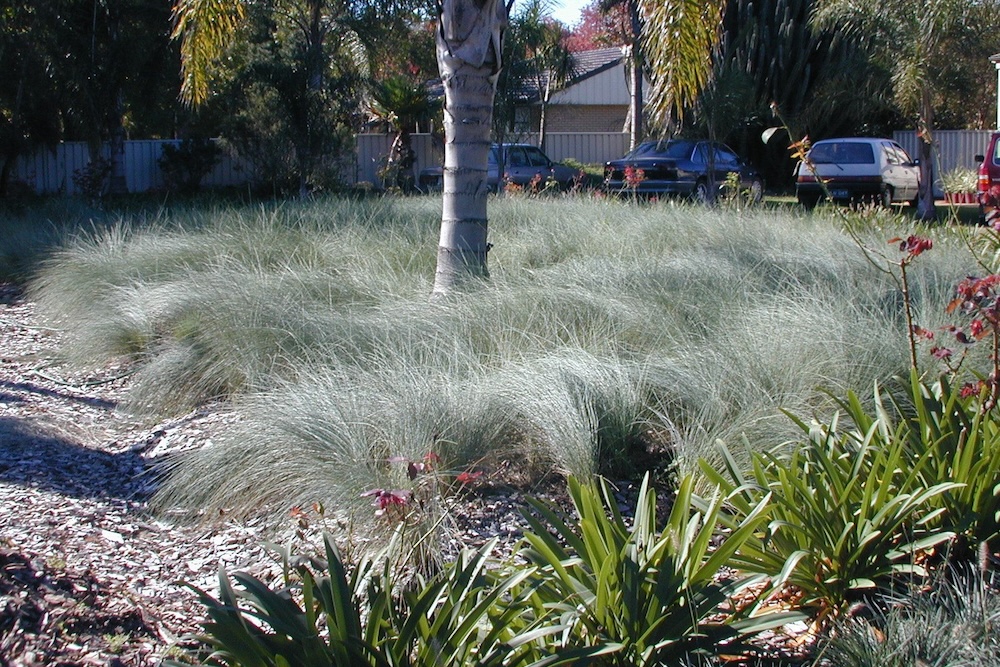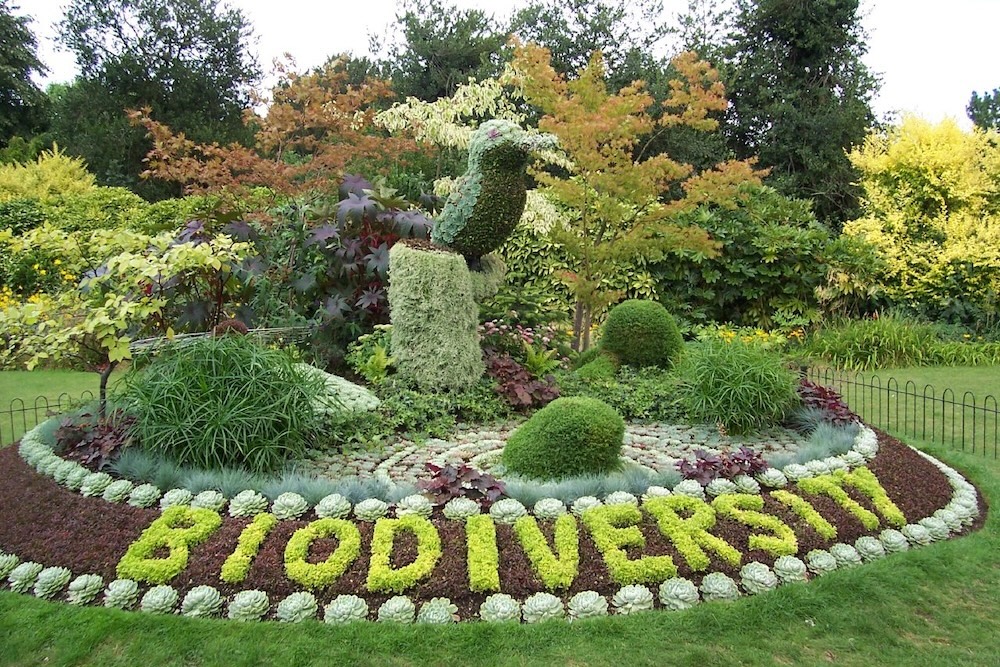Welcome to the world of polyculture, an approach to gardening that embraces diversity and mimics natural ecosystems.
Harmonious Acoustics: Crafting an Auditory Experience in Your Sensory Garden
A sensory garden, as the name suggests, is designed to stimulate and engage all five senses. It’s not just about visual appeal; it also caters to touch, smell, taste, and importantly, sound. The auditory element of a sensory garden often goes overlooked, but it plays an essential role in enhancing the overall sensory experience.
This article aims to guide you on how to create a calming and immersive auditory experience in your gardens, turning your outdoor space into a tranquil retreat filled with soothing sounds.

- Understanding the Role of Sound in a Sensory Garden
- The Science Behind Soothing Sounds in Aural Landscapes
- Crafting Your Garden Soundscape
- Choosing the Right Plants for Sound
- Water Features for a Soothing Garden
- Wind Chimes and Other Man-Made Auditory Elements
- How to Encourage Wildlife for Natural Sounds
- Daniel’s Wrap
Understanding the Role of Sound in a Sensory Garden
Garden sound involves carefully selecting and arranging elements in your garden to produce and enhance natural and man-made sounds.
The rustling of leaves, the chirping of birds, the trickling of water, and the chiming of wind chimes – these are all components of a harmonious garden soundscape.
Sounds have a profound impact on our senses and emotions. They can transport us to different places, evoke memories, and significantly influence our mood. A well-designed garden sound can create a sense of tranquillity and peace, making your garden a perfect place for relaxation and meditation.
The Science Behind Soothing Sounds in Aural Landscapes
Certain sounds have been scientifically proven to affect our mood and wellbeing positively. This is demonstrated by a recent study titled “The joy of birds: The effect of rating for joy or counting garden bird species on wellbeing, anxiety, and nature connection”.
This study found that simply observing bird species in the garden for thirty minutes significantly improved participants’ mood and reduced anxiety. Those who rated their feelings of joy in response to different bird species experienced even greater benefits.
These findings underscore the power of sensory gardens – the chirping of birds isn’t just pleasant to the ear, but it also enhances our connection with nature and elevates our mood.

The rhythmic sounds of nature, such as bird songs or water flowing, can induce a state of relaxation by slowing down our brainwaves. This is why these sounds are often used in meditation and mindfulness practices.
Nature sounds play a significant role in creating a calming environment. They can mask distracting noises from the surrounding area, such as traffic or construction, providing a more peaceful setting for relaxation or focus.
Crafting Your Garden Soundscape
Creating a calming garden soundscape involves careful planning and design to ensure the sounds blend harmoniously and contribute to a soothing atmosphere.
Here are some steps to help you get started:
- Identify the existing sounds: Before adding new sounds, take time to listen to the existing sounds in your garden. This includes both pleasant (like birds singing) and unpleasant sounds (like road noise).
- Choose your sounds: Decide on the types of sounds you want to include in your garden. This could be natural sounds (like rustling leaves or buzzing insects), water sounds (like a fountain or a brook), or man-made sounds (like wind chimes or garden bells).
- Place your sound sources strategically: The location of your sound sources can greatly affect how the sound is perceived. For example, placing a water feature near a seating area can provide a consistent soothing sound.
Remember, the aim is to create a balanced soundscape, where no single sound dominates.
By integrating nature sounds in your garden and following these garden soundscaping tips, you can create a tranquil oasis that appeals not only to the eyes but also to the ears.
Choosing the Right Plants for Sound
The Importance of Selecting Plants that Contribute to the Garden’s Soundscape
When we think about garden sound design, plants might not be the first element that springs to mind. However, choosing the right plants can significantly contribute to creating a calming garden soundscape.
Some plants, particularly those with certain types of leaves and seed pods that rustle in the wind, can add a delightful auditory dimension to your garden. Other plants can attract birds and pollinating insects that will introduce new sounds to the space.
Examples of Plants with Sound-Producing Qualities
Consider integrating plants like poas and lomandras into your garden. When the wind blows, they rustle to create a tranquil sound. Similarly, the clacking seed pods of certain acacias and the clattering of bamboo poles can add rich, natural sounds to your outdoor spaces.

For a more unusual auditory experience, the balloon plant (Gomphocarpus physocarpus) has large, spherical seed pods that, when dried, rattle in the wind. Remember, the goal is to create a balanced soundscape, so consider the volume and frequency of these sounds when selecting your plants.
Water Features for a Soothing Garden
Garden water features serve dual purposes; they are visually appealing and produce soothing sounds. The gentle trickling or flowing of water can mask unwanted noise from traffic or neighbours, enhancing the overall tranquillity of your garden.
As a side note, they can also make for a soothing touch element in your sensory garden. You can learn more about the touch elements of a sensory garden here.
Different Types of Water Features and the Sounds They Produce
There are various types of water features you can incorporate into your garden, each producing different sounds. A bubbling fountain creates a soft, continuous sound, whereas a waterfall can produce a louder, more powerful noise.
For a more subtle effect, consider a water rill, which provides a gentle, lapping sound.
Positioning Water Features for Optimal Sound Dispersion
Strategically positioning your water feature can optimise its sound dispersion. Place it near a seating area for a close, immersive experience, or use it as a focal point to draw visitors into the garden.
If you’re dealing with unwanted noise, position the water feature between the source of the noise and the main seating area to mask distracting sounds effectively.
Wind Chimes and Other Man-Made Auditory Elements
Wind chimes add a musical component to your garden. The gentle, melodic sound of chimes can create a relaxing atmosphere, enhancing your garden’s ambiance.

Other Musical Garden Elements to Consider
In addition to wind chimes, consider incorporating other musical elements into your garden. Garden bells and bamboo chimes can provide unique, harmonious sounds. You can invite musicians to play if you have an event in the garden.
Some people even like to install speakers and play music. There’s nothing wrong with this but if you’re aiming for a therapeutic sensory garden, perhaps choose something tranquil to play.
Natural Sounds in Outdoor Spaces
Encouraging wildlife into your garden can significantly enhance its auditory appeal. The chirping of birds, the buzzing of insects, and even the croaking of frogs can create a vibrant, lively soundscape.
How to Encourage Wildlife for Natural Sounds
Plant a variety of native plants to attract different bird species and insects. Provide sources of food, water, and shelter to encourage wildlife to visit and stay in your garden.
Plants such as callistemons, grevilleas and westringias that have nectar-rich flowers as well as habitat. Birds and insects alike love these plants, but don’t feel like you need to get stuck on these plants; there are plenty of others available in your plant palate.
People often overlook grasses, but they’re also an invaluable source of habitat and food for a range of insects and larger animals. They just don’t feed many pollinating insects, that’s all.
Daniel’s Wrap
Creating a tranquil garden soundscape involves careful selection of plants, strategic placement of water features, and the addition of musical elements. By integrating nature sounds in your gardens, you can transform your outdoor space into a peaceful retreat.
So why not experiment with different sounds and create your own immersive garden sound experience? Your ears will thank you.




This Post Has 0 Comments